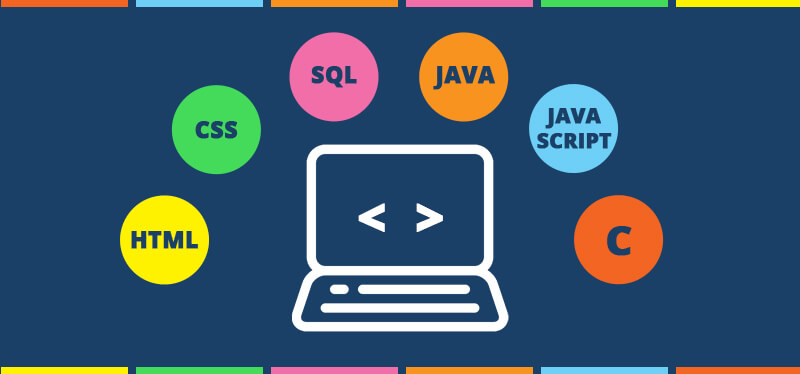- .Net Core
- 817
- July-13-2025
- by Ihsan Ullah
API Testing is essential to ensure your APIs are reliable, secure, and perform well under expected and unexpected conditions. Below are the key strategies and best practices to ensure reliability and security when testing APIs:
🔐 1. Security Testing Strategies
Security testing ensures your API is protected from threats and unauthorized access.
✅ Authentication & Authorization
- Test token-based authentication (e.g., OAuth2, JWT).
- Verify role-based access controls.
- Attempt unauthorized access to verify restrictions.
✅ Data Encryption
- Ensure HTTPS is enforced.
- Check if sensitive data (e.g., passwords, tokens) is encrypted at rest and in transit.
✅ Input Validation
- Inject SQL, XML, or script payloads to test for SQL Injection, XSS, and XXE attacks.
- Check for proper error handling and sanitization of inputs.
✅ Rate Limiting / Throttling
- Simulate excessive API calls to ensure rate limiting works.
- Ensure that denial-of-service (DoS) protections are in place.
🧪 2. Functional Testing Strategies
These tests ensure the API behaves as expected.
✅ Positive Testing
- Provide valid inputs and check if the response meets business logic.
✅ Negative Testing
- Pass invalid inputs, missing fields, or wrong HTTP methods.
- Expect correct HTTP status codes like 400 (Bad Request), 401 (Unauthorized), 403 (Forbidden), 404 (Not Found), etc.
✅ Schema Validation
- Ensure the API response matches the expected JSON/XML schema.
📈 3. Performance & Load Testing
Test how your API performs under stress.
✅ Load Testing
- Simulate real-world traffic to verify the API can handle expected usage.
✅ Stress Testing
- Push the API beyond limits to see how it handles overload or fails gracefully.
✅ Latency Testing
- Measure response times and ensure they stay within acceptable thresholds.
📌 Tools: Apache JMeter, Locust, k6, Postman Monitor
🔁 4. Reliability & Regression Testing
Ensure your API continues to work reliably after changes.
✅ Automated Regression Tests
- Use automated test suites to catch issues during CI/CD.
- Re-test all critical paths when any code is changed.
✅ Contract Testing
- Tools like Pact help ensure API contracts are honored between services.
🧰 5. Tools and Best Practices
Here are some tools and practices to follow for effective API testing.
🛠️ Popular Tools
- Postman – Manual and automated API tests
- Rest Assured – Java-based REST API testing
- SoapUI – For SOAP and REST APIs
- OWASP ZAP – For security vulnerability scanning
- Newman – Run Postman tests from CLI (for CI/CD)
🌟 Best Practices
- Test early and often (Shift-left testing).
- Use environment variables for different environments (dev, test, prod).
- Keep test data isolated and clean.
- Document expected inputs/outputs using OpenAPI/Swagger.
- Include API testing in CI/CD pipelines.
🔒 6. Common Security Tests Checklist
|
Test Type |
Description |
|
Broken Authentication |
Test for missing or weak authentication |
|
Sensitive Data Exposure |
Check for leaked sensitive data |
|
Rate Limiting |
Ensure DoS protection is in place |
|
Injection Attacks |
Try SQL/XSS injection |
|
Improper Error Handling |
Test for stack traces or detailed error info |
Summary Table
|
Strategy Type |
Key Focus Areas |
|
Functional Testing |
Input/output correctness, status codes |
|
Security Testing |
Auth, data protection, rate limiting |
|
Performance Testing |
Speed, scalability, load |
|
Reliability |
Automated regression, contract testing |
API Testing is essential to ensure your APIs are reliable, secure, and perform well under expected and unexpected conditions. Below are the key strategies and best practices to ensure reliability and security when testing APIs:
🔐 1. Security Testing Strategies
Security testing ensures your API is protected from threats and unauthorized access.
✅ Authentication & Authorization
- Test token-based authentication (e.g., OAuth2, JWT).
- Verify role-based access controls.
- Attempt unauthorized access to verify restrictions.
✅ Data Encryption
- Ensure HTTPS is enforced.
- Check if sensitive data (e.g., passwords, tokens) is encrypted at rest and in transit.
✅ Input Validation
- Inject SQL, XML, or script payloads to test for SQL Injection, XSS, and XXE attacks.
- Check for proper error handling and sanitization of inputs.
✅ Rate Limiting / Throttling
- Simulate excessive API calls to ensure rate limiting works.
- Ensure that denial-of-service (DoS) protections are in place.
🧪 2. Functional Testing Strategies
These tests ensure the API behaves as expected.
✅ Positive Testing
- Provide valid inputs and check if the response meets business logic.
✅ Negative Testing
- Pass invalid inputs, missing fields, or wrong HTTP methods.
- Expect correct HTTP status codes like 400 (Bad Request), 401 (Unauthorized), 403 (Forbidden), 404 (Not Found), etc.
✅ Schema Validation
- Ensure the API response matches the expected JSON/XML schema.
📈 3. Performance & Load Testing
Test how your API performs under stress.
✅ Load Testing
- Simulate real-world traffic to verify the API can handle expected usage.
✅ Stress Testing
- Push the API beyond limits to see how it handles overload or fails gracefully.
✅ Latency Testing
- Measure response times and ensure they stay within acceptable thresholds.
📌 Tools: Apache JMeter, Locust, k6, Postman Monitor
🔁 4. Reliability & Regression Testing
Ensure your API continues to work reliably after changes.
✅ Automated Regression Tests
- Use automated test suites to catch issues during CI/CD.
- Re-test all critical paths when any code is changed.
✅ Contract Testing
- Tools like Pact help ensure API contracts are honored between services.
🧰 5. Tools and Best Practices
Here are some tools and practices to follow for effective API testing.
🛠️ Popular Tools
- Postman – Manual and automated API tests
- Rest Assured – Java-based REST API testing
- SoapUI – For SOAP and REST APIs
- OWASP ZAP – For security vulnerability scanning
- Newman – Run Postman tests from CLI (for CI/CD)
🌟 Best Practices
- Test early and often (Shift-left testing).
- Use environment variables for different environments (dev, test, prod).
- Keep test data isolated and clean.
- Document expected inputs/outputs using OpenAPI/Swagger.
- Include API testing in CI/CD pipelines.
🔒 6. Common Security Tests Checklist
|
Test Type |
Description |
|
Broken Authentication |
Test for missing or weak authentication |
|
Sensitive Data Exposure |
Check for leaked sensitive data |
|
Rate Limiting |
Ensure DoS protection is in place |
|
Injection Attacks |
Try SQL/XSS injection |
|
Improper Error Handling |
Test for stack traces or detailed error info |
Summary Table
|
Strategy Type |
Key Focus Areas |
|
Functional Testing |
Input/output correctness, status codes |
|
Security Testing |
Auth, data protection, rate limiting |
|
Performance Testing |
Speed, scalability, load |
|
Reliability |
Automated regression, contract testing |







